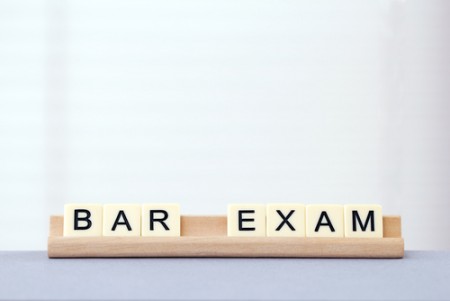Cut score for California state bar exam to stay at 1440--for now

The California Supreme Court announced Wednesday that it will not be adjusting the state bar cut score, which is 1440.
Traditionally, the cut score is set by the state’s bar exam committee, but in July, the California Supreme Court amended the rule, asserting its own authority to determine the score. The decision follows a standards setting study (PDF) commissioned by the State Bar of California, along with a survey report (PDF) of more than 30,000 attorneys, 80 percent of whom favored leaving the cut score alone. However, many law school deans urged lowering the cut score.
“The court has reviewed the standard setting study, the State Bar’s Final Report, the amicus letters submitted pursuant to the court’s order of Sept. 14, 2017, and the policy concerns raised in submissions on this issue. Based on that review and balancing all considerations, the court is not persuaded that the relevant information and data developed at this time weigh in favor of departing from the long-standing pass score of 1440,” the California Supreme Court wrote in a letter to Michael G. Colantuono, president of the bar’s Board of Trustees, and Leah Wilson, the organization’s executive director.
In August, the State Bar of California’s Committee of Bar Examiners voted 13-1 to recommend leaving California’s bar cut score at 1440. Conversely, the bar’s Law School Council endorsed lowering the cut score to something between 1350 and 1390. Additionally, the Association of California Accredited Law Schools, a group whose members are law schools with state accreditation, not ABA accreditation, sent a letter (PDF) to California bar leadership Sept. 1, asking that the cut score be lowered to 139.
The justices wrote that they would consider “any appropriate recommendation” to revisit the cut score issue in the next review cycle, “or sooner if the court so directs.”
Other state bar exam studies are ongoing, and the court expects them to be completed, according to the letter. Also, the letter encourages the state bar and California law schools to work cooperatively together to examine things like student metrics, teaching techniques and how such data could be used to improve instruction in regards to preparing California law students to pass the bar and practice law.
Out of 8,147 people who sat for the July 2016 California bar, 42.7 percent (3,481) passed, according to a general statistics report (PDF) released by the organization.
“Although the lower pass rates associated with the recent administrations of the California bar exam have generated concerns, the downward trend in pass rates appears to be consistent with a broader national pattern: statistics published by the National Conference of Bar Examiners disclose that the decline of California’s overall pass rate from 2007 to 2016 mirrors the average 9 percent decline of overall pass rates observed nationally over the same period,” the justices wrote.



